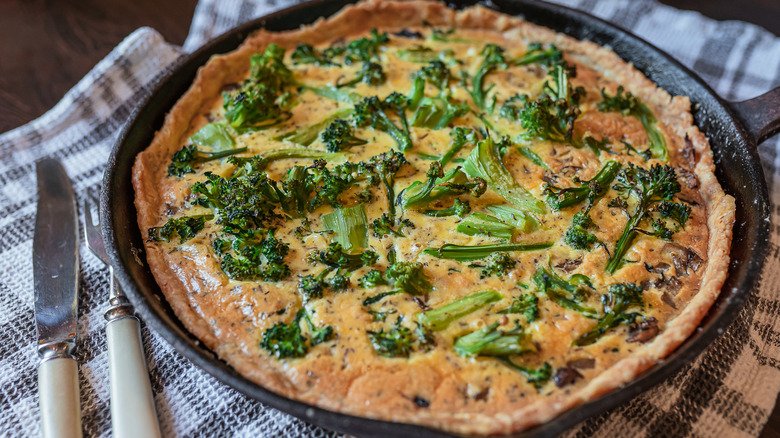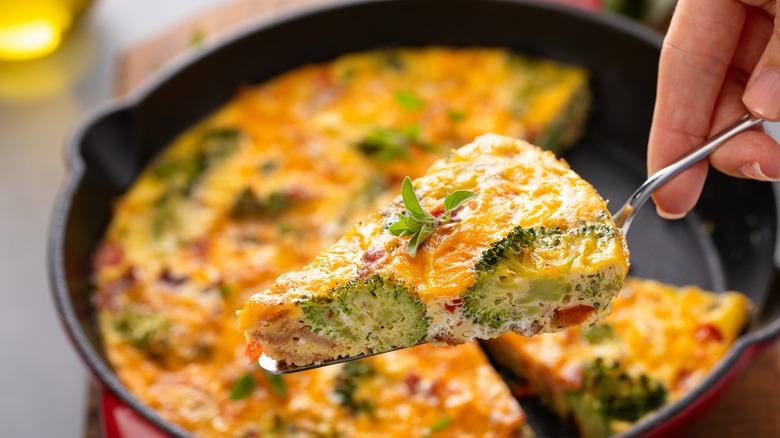Why You Should Start Baking Quiche In A Cast Iron Skillet
Quiche is one of the easiest breakfasts to make — and it's a little more sophisticated than just making plain scrambled eggs. Besides a kick of protein, you'll also get the crisp texture and buttery flavor of a quality flaky pie crust, which makes quiche an excellent dish to bring to a fancy brunch or to serve as a Sunday special. But instead of reaching for your pie tin for your quiche, consider pulling out your cast iron skillet.
Cast iron skillets are the workhorses of the kitchen for a reason. The pan has a very high heat retention, which means that it will cook your pie crust (and the filling) more evenly than a cheap aluminum, glass, or ceramic pan. Since the skillet gets so hot so fast, it will, in essence, cook the bottom of the pie crust faster than the filling, which will prevent your quiche from coming out of the oven with the dreaded soggy bottom.
Cast iron to the rescue
There are some important steps that you'll need to take to prepare your cast iron skillet for quiche-making. The first is that your pan needs to be well-seasoned with oil to prevent the crust from sticking to it. It will also help prolong the life of your cast iron skillet, as seasoning it often will help prevent it from rusting.
Once you've gotten your ingredients out for your quiche, you'll want to add any items that you need to pre-cook, like bacon, sausage, or hard veggies (like peppers and onions), to the oiled skillet. You can leave some grease in the pan before you add your pie crust; this will further prevent it from sticking to the sides and bottom. Then, add your egg filling, mixed with any add-ins, to the pie crust and pop the entire thing in the oven to bake.
You can serve your quiche directly from the skillet — just be wary that because the cast iron holds heat a little too well, it will be very hot and awkward to handle. And, although you may have heard rumors that you can't use metal utensils on a cast iron pan, it's far from the truth; the cast iron is durable enough to hold up to a knife slicing through the quiche, or in the case of mini skillet quiches, a fork pushing against the bottom.

